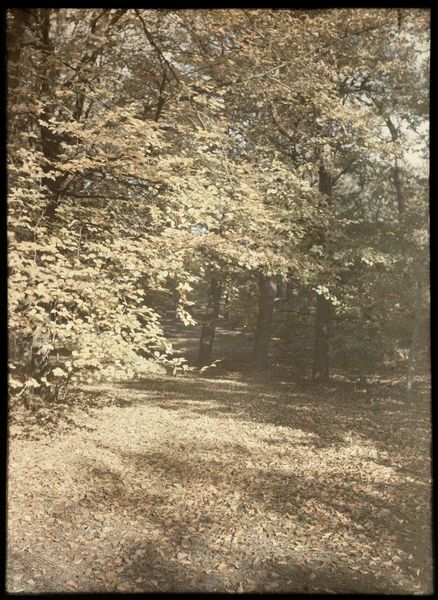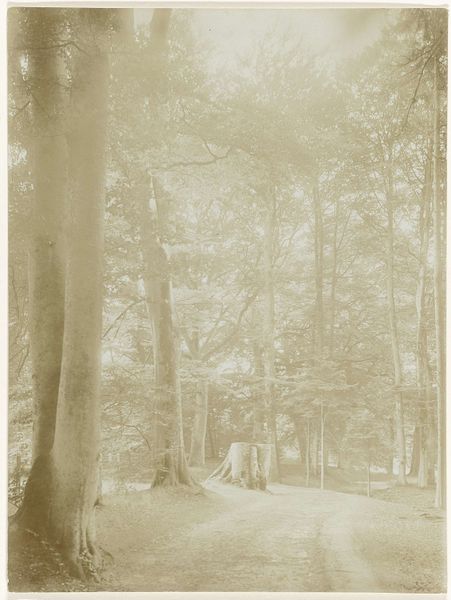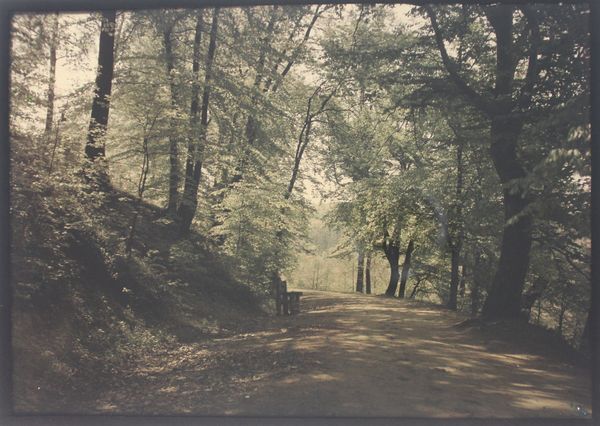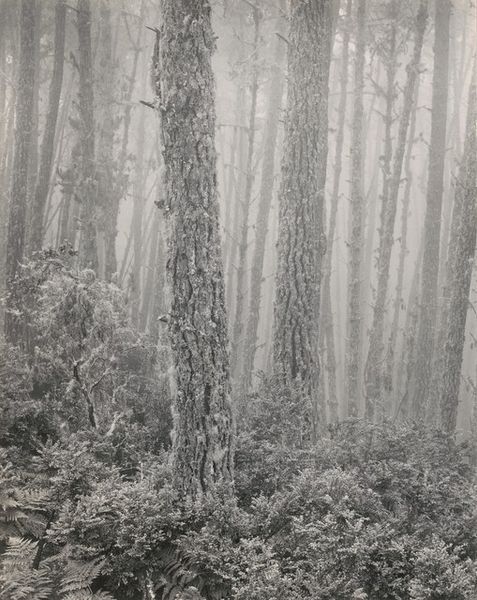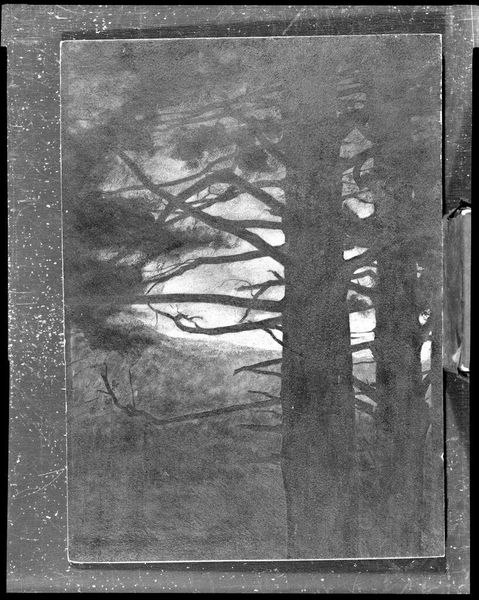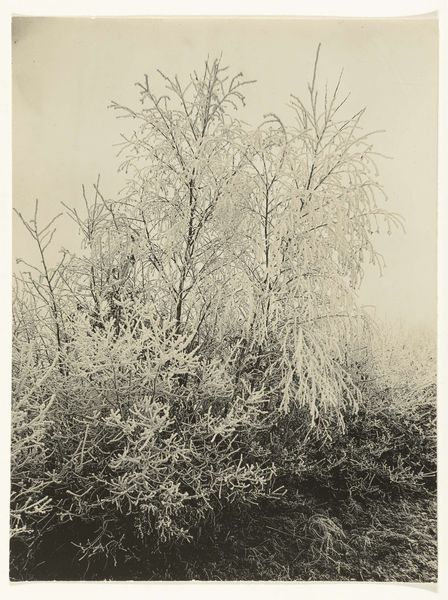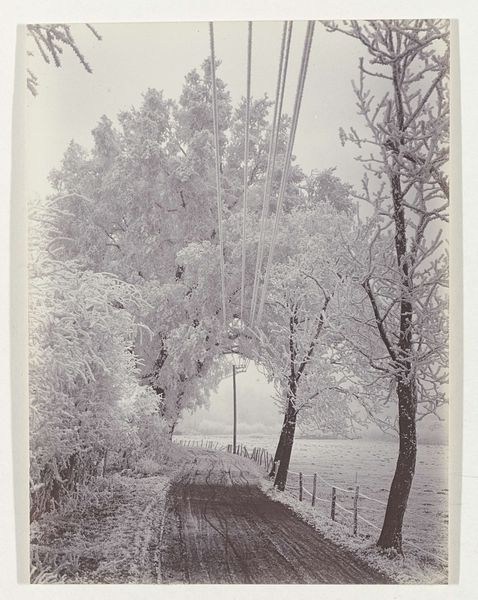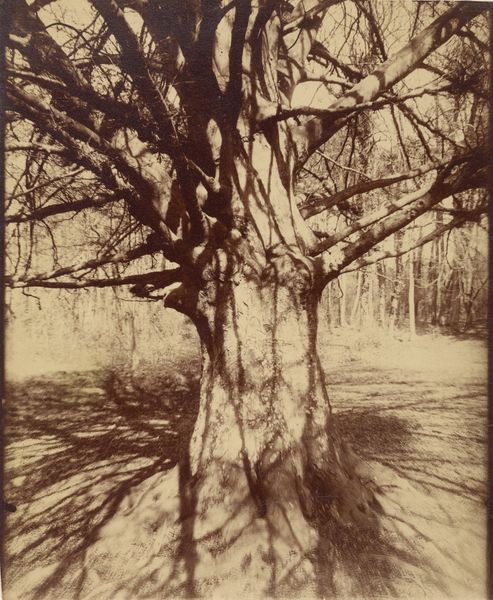
Gezicht in een bos, met bomen aan weerszijden van een pad 1907 - 1930
0:00
0:00
Dimensions: height 120 mm, width 90 mm
Copyright: Rijks Museum: Open Domain
Curator: This is "Gezicht in een bos, met bomen aan weerszijden van een pad," or "View in a forest, with trees on either side of a path," a photograph created sometime between 1907 and 1930, attributed to Adolphe Burdet, and it now resides here at the Rijksmuseum. Editor: It feels so ethereal, almost faded. The path draws my eye in, but the overall hazy quality makes it feel more like a dream than a real place. Curator: Absolutely. Given the timeframe, think about the development of photographic materials during this period. The choices regarding the chemicals and the printing process are fascinating, impacting not just the image itself, but also who could afford or access photographic equipment and training. Editor: Right, access is key. Was photography gaining ground as an accepted art form, or was it still mostly seen as documentation at this time? Who were the patrons supporting photographers like Burdet? Was this for personal projects, or commissioned work serving a specific purpose? Curator: Those are essential questions. Landscape photography, especially depictions of the natural world, experienced a surge in popularity, corresponding with increasing urbanization. Images of pristine wilderness offered a powerful contrast, feeding a growing desire for escape and simpler ways of life. Editor: And that longing for escape ties into how the photograph operates culturally. The soft focus, almost bleached quality enhances this sense of otherworldliness, turning the forest into a sanctuary removed from the rapid changes happening in society. It almost idealizes a relationship to nature that might not have even existed. Curator: I concur, and examining it more deeply, the deliberate construction of this image using a relatively accessible medium gives a fascinating look into social dynamics of art-making at the beginning of the 20th century. Editor: Precisely, the more we uncover the cultural and historical currents that fed its creation, the richer and more complex our reading of this seemingly simple photograph becomes.
Comments
No comments
Be the first to comment and join the conversation on the ultimate creative platform.
